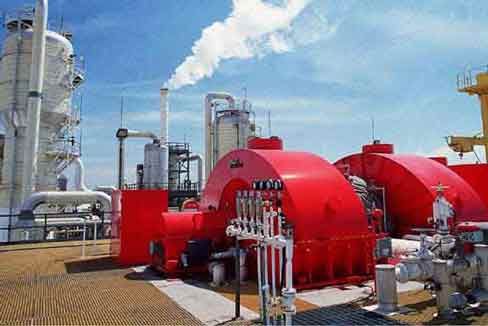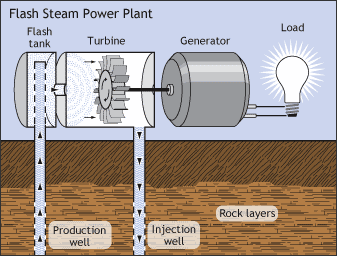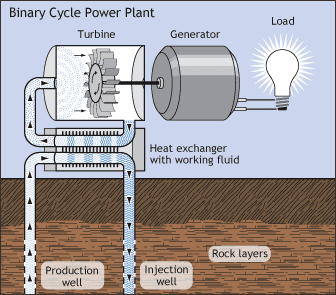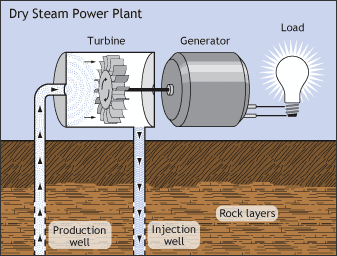|
A Geothermal Power Plant
The conversion technologies are dry steam, flash, and binary cycle. Read on for more - and be sure to watch the video at the bottom of the page too. It shows how a geothermal power plant works! 
The type of conversion used depends on the state of the fluid (whether steam or water) and its temperature. Dry steam power plant systems were the first type of geothermal power generation plants built. They use the steam from the geothermal reservoir as it comes from wells, and route it directly through turbine/generator units to produce electricity. Flash steam plants are the most common type of geothermal power generation plants in operation today. They use water at temperatures greater than 182°C (360°F) that is pumped under high pressure to the generation equipment at the surface. Dry Steam Power Plants This is the oldest type of geothermal power plant. It was first used at Lardarello in Italy in 1904, and is still very effective. Steam technology is used today at The Geysers in northern California, the world's largest single source of geothermal power. These plants emit only excess steam and very minor amounts of gases. Binary cycle geothermal power generation plants differ from Dry Steam and Flash Steam systems in that the water or steam from the geothermal reservoir never comes in contact with the turbine/generator units.
Fluid is sprayed into a tank held at a much lower pressure than the fluid, causing some of the fluid to rapidly vaporize, or "flash." The vapor then drives a turbine, which drives a generator. If any liquid remains in the tank, it can be flashed again in a second tank to extract even more energy.

Binary-Cycle Power Plants Hot geothermal fluid and a secondary (hence, "binary") fluid with a much lower boiling point than water pass through a heat exchanger. Heat from the geothermal fluid causes the secondary fluid to flash to vapor, which then drives the turbines. Because this is a closed-loop system, virtually nothing is emitted to the atmosphere. Moderate-temperature water is by far the more common geothermal resource, and most geothermal power plants in the future will be binary-cycle plants.

Here is a great animation showing exactly how a geothermal power plant works.
Return From A Geothermal Power Plant to Home Page |






